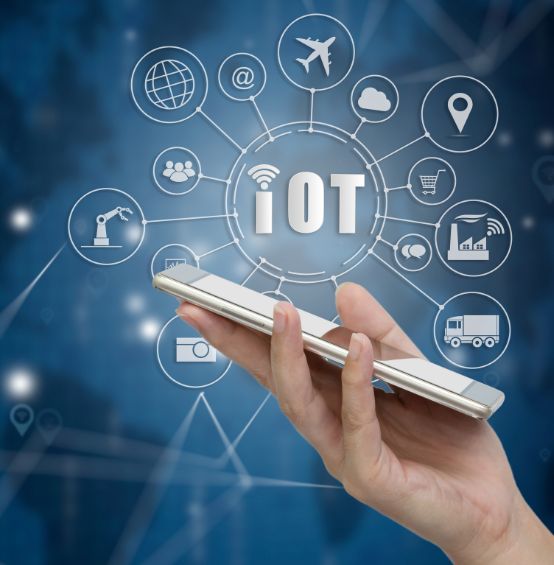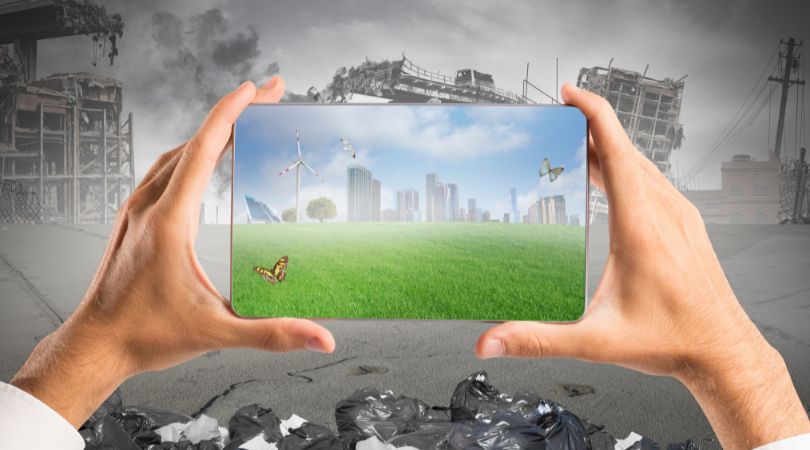With the sustainable movement spiking around the world, digital sustainability has become the main topic of conversation in 2022. You might have heard about the fantastic sustainable website hosting providers that lower carbon footprint in their data centers. Or maybe, you’ve already opted for a Green Credit Card to neutralize your carbon footprint with every gas purchase. Digital sustainability takes these concepts one step further reaching a wide variety of sectors.
As Bain & Company and the World Economic Forum pointed out in their most recent survey, 400 executives from various industries agreed that green digital technologies already started to have a positive impact on their sustainability goals.
While the global success rate for digital sustainability initiatives is currently at only 4%, this number is forecasted to grow to 35% in the next few years.
Digital Sustainability Is In High Demand & Companies Are Taking Notes
The universal shift toward mindful business practices comes as no surprise given that 70% of US consumers now care about sustainability when purchasing a product. Now, if we consider that 88% also mention that they would be more loyal to a brand implementing sustainable practices, we’ll quickly realize why the GreenTech meta trend has skyrocketed in popularity. In fact, the global GreenTech market is forecasted to grow at a CAGR of 27.2% through 2028.
But what exactly is digital sustainability? How Green Tech can help reverse the damage we’ve already caused to our planet? And what are the most prominent examples of digital sustainability in 2022? Here’s what you need to know.
What Is Digital Sustainability?

Consider Green tech as a term to describe all the ways companies can use technology and science to minimize their impact on our environment. The main goal? To measure and track sustainability progress, reduce the environmental footprint, minimize greenhouse emissions, and become mindful of the way we utilize our resources while adopting a more circular economy.
Solar panels, for example, are a part of Green Tech that creates no greenhouse gas emissions as the sun provides more energy than we’ll ever need. Other Green Tech examples include alternative fuels, sunlight transport, plastic roads crafted from recycled materials, and plant walls to act as natural air filters.
Unsurprisingly, nearly a third of U.S. greenhouse gas emissions are released by transportation activities, according to the Environmental Protection Agency. Fuel-efficient engines and electrical power are two eco-conscious ways to reduce automotive emissions with Green Tech.
So essentially, through scientific research (atmospheric science, agriculture, material science, and hydrology), the Green technology aims to repair the damage we’ve already done to the environment and conserve our natural resources.
Top Digital Sustainability Solutions Of 2022
Amongst the many innovative ideas, IoT, AI, and cloud computing are the core technologies that lead the digital sustainability movement’s growth. As a matter of fact, according to McKinsey, using green AI to reduce food waste could save organizations $123B a year by 2030.
Artificial Intelligence-Powered Sustainability
While you’ve definitely heard of artificial intelligence (AI) before, you might not be aware of its numerous eco benefits. In reality, apart from online shopping and advertising, AI can do complex data analysis and management to help minimize a company’s carbon emissions.
According to Nature’s recently published study, AI could help achieve 79 % of the Sustainable Development Goals (SDGs). Production facilities, for example, can use AI to predict the carbon footprint to better understand their environmental impact. It can even upgrade the efficiency of renewable energies by predicting the amount of energy required for certain productions.
On top of that, AI can even help with the persistent issue of traffic congestion, improve cargo transport, and help the development of self-driving cars.
Cloud Computing For A Green Digital Future
Sustainable cloud computing technologies can significantly minimize carbon emissions. Think of it like that; instead of having a personal car, you can now share it with other people to reduce your footprint.
Cloud computing can help reduced infrastructure, physical space, and energy usage. As Capgemini research noted, cloud computing could potentially remove 1 billion metric tons of CO2 between 2021 and 2024.
Additionally, Google’s Third Decade of Climate Action report also highlighted all the ways an efficient cloud system can lead to the most efficient renewable energy consumption all thanks to digital sustainability.
Increase Productivity & Reduce Waste With The Iot (Internet of things)
As the Tech Agent explained, An IoT ecosystem consists of web-enabled smart devices that use embedded systems, such as processors, sensors, and communication hardware, to collect, send and act on data they acquire from their environments. With no human-to-human or human-to-computer interaction, The internet of things uses AI machine learning to successfully collect and process data.
Apart from helping owners automate their homes by connecting them to a variety of sensors, alarms, cameras, lights, and microphones, IoT offers businesses a never-seen-before level of instant access to performance insights.
From monitoring the supply chain to checking their production performance and managing their logistics. In the agriculture industry, for example, farmers can use IoT sensors to collect weather and soil data to automate farming, reduce costs and increase productivity.

Digital Sustainability – In Conclusion
As more and more people are demanding for a change, the need to reduce human impacts on the natural environment only grows by the minute. Digital sustainability offers solutions to manage our environmental footprint, minimize greenhouse emissions, use our resources cleverly and adopt a more eco-conscious mindset in every aspect of our day-to-day lives.
IoT, AI, and cloud computing are part of the Green tech revolution that aims to push us towards achieving a clean global economy, raise global awareness of the numerous environmental issues and change the way we produce and consume.


About Author
Konstantina Antoniadou
Freelance sustainability and fashion writer with an ongoing curiosity to explore new innovative technologies, and report on trends in “green” industries.



